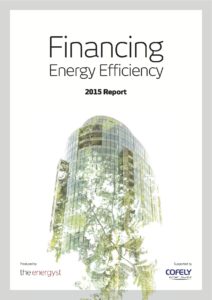 Energy managers must report directly to boards rather than to finance directors, according to Lord Redesdale, head of the Energy Managers Association.
Energy managers must report directly to boards rather than to finance directors, according to Lord Redesdale, head of the Energy Managers Association.
Speaking at a breakfast briefing in June, Lord Redesdale said that energy managers also need financial training so that their recommendations stand a chance of being approved.
Meanwhile, energy services companies (Escos) and solutions providers need to create more innovative business models to create service contracts that do not fall foul of European accounting laws and that compel businesses to invest in energy efficiency, according to Stephen Fawkes, head of the Investor Confidence Project Europe.
The breakfast event was held to launch Financing Energy Efficiency, a new report produced by Energyst Media and sponsored by Cofely. The report, based on reader survey data as well as interviews with financiers and energy managers, is available to download for free.
Alongside Redesdale and Fawkes on the panel were Bill Rogers, head of energy efficiency at the Green Investment Bank and Tony Crane, strategic development director, Energy Services, Cofely UK.
Crane said that Cofely was developing new, service-oriented business models but admitted that the industry had made energy finance too complex. He said service providers must be transparent about finance options and try to win back client trust by acting as independent advisers.
“The right solution might not be to finance it,” said Crane. “We have to explain both options and recommend the best way forward. That way, clients will realise we are trying to help them, not just finance everything.”
Cost of capital was also a barrier to signing off projects. The GIB’s Rogers said the bank was working to bring down that cost but that underlying risk could only be mitigated by good project development. Rogers said it was lacking within energy efficiency.
Fawkes agreed cost of finance was an issue, and that EPCs could no longer be “black boxes” in terms of rates and margins. Scale would bring down cost of capital, he said, and 2% should be the aim. That would not materialise without standardised development protocols and robust performance data upon which to build trust, he said.
Download your free copy of Financing Energy Efficiency here.
Click here to see if you qualify for a free subscription to the print edition.
Follow us at @EnergystMedia. For regular bulletins, sign up for the free newsletter.



